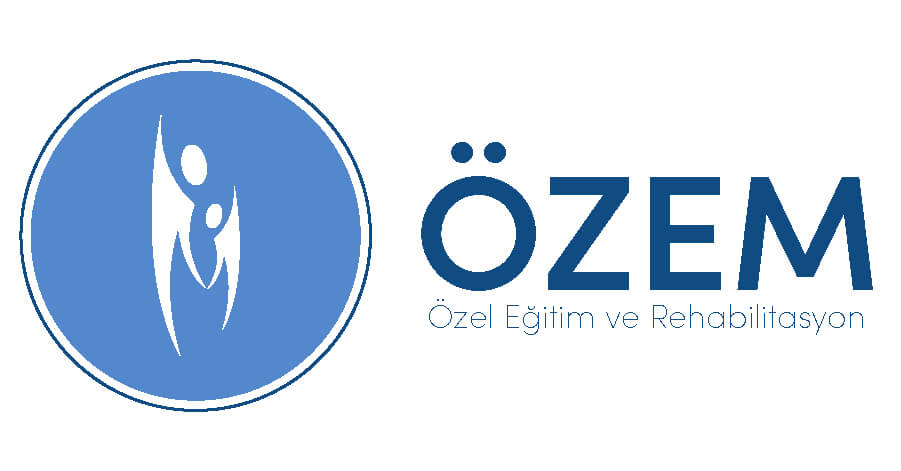Occupational therapy in our country, has been in vogue for several years and is used as an intervention technique., in fact, it is a support application that should aim to increase the quality of life of the individual.. This situation, causes occupational therapy to dominate special education. Occupational therapy, which is dramatic, has no such capability.. Occupational therapy cannot replace special education, but can support special education. We see that occupational therapy is used intensively instead of special education, especially in children with neurodevelopmental disorders.. This is misleading in the most polite expression. A person with autism does not make eye contact, does not respond to his name, but does not receive special training and receives occupational therapy. When occupational therapy is applied to appropriate individuals at the appropriate time, It is a support application that can make serious contributions to the quality of life of individuals who are applied.. Occupational therapy is not an intervention program.
What is sensory integration?
“Sensory integration” term, processing sensory information from the body and the environment, means integrating and organizing.
Simply put, this, how we experience information from our senses, how we interpret and react (or we ignore) It means. To get dressed, to eat, to wander, socialize, Sensory integration is important in everything we have to do on a daily basis, such as learning and working..
sensory information, received from our senses, including:
- Seeing (meeting)
- Hearing (auditory system)
- Do not touch (tactile system)
- Tat (gave systems)
- A tree (scent system)
- Proprioception (body awareness and position senses)
- vestibular (movement, balance and coordination awareness)
- Interoception (hunger, needing the toilet, tiredness, emotions etc. our internal sense system, which tells us what's going on inside our body, such as)
For most of us, sensory integration develops as part of our normal development when we're young and rolling., crawling, takes place in the things we do, such as walking and playing; for others, sensory integration is less developed.
Our understanding of sensory integration was first developed in the US in the late 60s and 70s., Developed by Dr A Jean Ayres, an occupational therapist and psychologist with an understanding of neuroscience. Ayres, defined sensory integration as:
“The neurological process that organizes sensations from one's own body and the environment and makes it possible to use the body effectively with the environment.” (1972)
Parents ve professionals Learn more about sensory integration through our short online courses for .
What is the difference between sensory integration and sensory processing?
Both the terms "sensory integration" and "sensory processing" , to receive signals in the brain from our senses, refers to the processes that allow us to make sense of these signals and respond appropriately.
The concept of sensory integration was first developed and defined by Dr A Jean Ayres in the 1970s.. 2006’da Dr Lucy Miller, Based on Ayres Sensory Integration “sensory processing disorder” published the model.
Therapists and writers, tend to use a specific term depending on where they were educated.
What sensory integration and sensory processing challenges look like?
What happens if the signals from our senses are too weak? Or is it too strong? Or if our brain overreacts or underreacts to signals.? Or if the brain can't make sense of these signals? The individual will experience sensory integration difficulties and this may be evident in their behavior. Some people, may experience sensory input as overwhelming and distressing, leading to 'sensory overload'’ may cause. Individuals are hypersensitive to sensory input, may be insensitive or both.
It is common for all of us to occasionally feel inadequate or hypersensitive to sensory input.; for example, If you have a headache, music or bright lights may be too much for you.; You may feel uncoordinated or have trouble focusing if you are tired. However, these feelings are temporary and do not normally affect your daily functioning in the long run.. Sensory integration or sensory processing difficulties are long-term and have a major impact on daily life and learning.. But with professional advice and, if appropriate, therapy, much can be done to support improvements in a person's daily functioning..
While some individuals have difficulty processing input from a particular sense, (e.g. image processing), other individuals may have difficulty integrating input from multiple sensory systems. Sensory integration difficulties, although sometimes it results in similar behavior, Note that it is different from sensory disorders such as hearing loss. . For example, a person with excellent hearing, has difficulty processing incoming auditory signals, may have difficulty following conversations.
Four categories of sensory integration difficulties have been identified (Parham ve Mailloux (2015):
Sensory modulation problems
Problems with sensory modulation, occurs when our brain over- or under-respond to sensory information. For example, if someone overreacts to touch, may very well be aware of the label on the back of their clothes. If someone is under-reactive to touch, may not realize that someone is touching her shoulder.
People can be hypersensitive or undersensitive in all different senses., in a sense hypersensitive, were found to be able to respond inadequately in the other. For some people, they may be oversensitive and under-responsive in the same sense.. Sensitivity may be due to a situation, for example, a stressful situation can make us become more and sometimes less aware of the senses..
Sensory discrimination and perceptual problems
This, when the brain has difficulty making sense of the sensory information it receives. If these issues are related to touch information, the person may appear clumsy or use too much or too little force while doing something. A person with visual perception problems, may have difficulty finding objects or finding a word on a page in complex environments.
Vestibular bilateral functional problems
these problems, it is the result of problems with our vestibular sense and can cause poor balance and difficulties coordinating the two sides of the body. Balance and coordination problems can be the result of a number of different problems: A qualified SI practitioner, will be able to determine whether difficulties are a result of problems in the vestibular system.
practical problems
Praxis, is the medical term for how our brain plans and performs movements that we have not done before. This is for kids, can learn to jump; for adults it can be learning to drive or use chopsticks.
When sensory information is not properly processed it can make new movements very difficult, because the child does not have the ability to make sense of incoming different sensory information. Because, where their bodies are and how much force they need to make a new move., They try to understand that speed and direction are needed.. We call it difficulties with praxis dyspraxia or developmental coordination disorder.
Parents ve professionals Learn more about behaviors that may indicate sensory integration difficulties through our short online courses for .
How common are sensory integration problems?
Sensory integration difficulties with other diagnoses (autism, ADHD, UN, including genetic syndromes and learning difficulties) may occur together and may occur without any other diagnosis., It is difficult to give an exact figure about the prevalence.
2009a made in * research, her 6 found that 1 in 1 child had sensory processing problems that made it difficult to learn and work in school. Other research, 66% of autistic children (65-90% of autistic children depending on research study) and children with special educational needs (non autistic) %32He found that 5% showed definite differences in sensory behavior..
more recently, One 2020 article***, sensory processing difficulties, Disabling control in autistic children in the school context, found that it predicted executive and cognitive dysfunctions in auditory sustained attention and short-term verbal memory..
What is sensory integration therapy?
Sensory integration therapy should only be performed by a qualified SI Practitioner: this, SI'da ek, a qualified occupational therapist with rigorous postgraduate training, speech and language therapist or physical therapist. This training, as well as developing a detailed understanding of neuroscience and the evidence base supporting sensory integration, includes developing expertise in evaluating and providing interventions to people with sensory integration problems.
SI treatment (or SI interventions), structured exposure to sensory input, movement therapy, balance treatments, carefully designed and customized physical activities and accommodations (for example, changes in environment or routine) includes. An SI Practitioner, a 'sensory diet' for that particular client’ client to create, family, caregivers, school, with other allied health professionals or employers (as appropriate) can work. sensory diet, a recommended activity and accommodation to help provide the individual with the sensory input they need (can be performed both in therapy sessions and at home or school) is the package.
SI Practitioners’ Register'da , Search for therapists with sensory integration qualifications in SIE's UK accredited master's program in SI .
for many people, minor adjustments that they are allowed to move around in their environment or at school or work, can make a big difference in the way they manage their daily lives. Parents, for teachers and other professionals to learn more about sensory integration challenges and to make changes to your environment or work that will make these activities more accessible., a series to help you think about the way you run the game or school course we offer. people with sensory integration difficulties.

